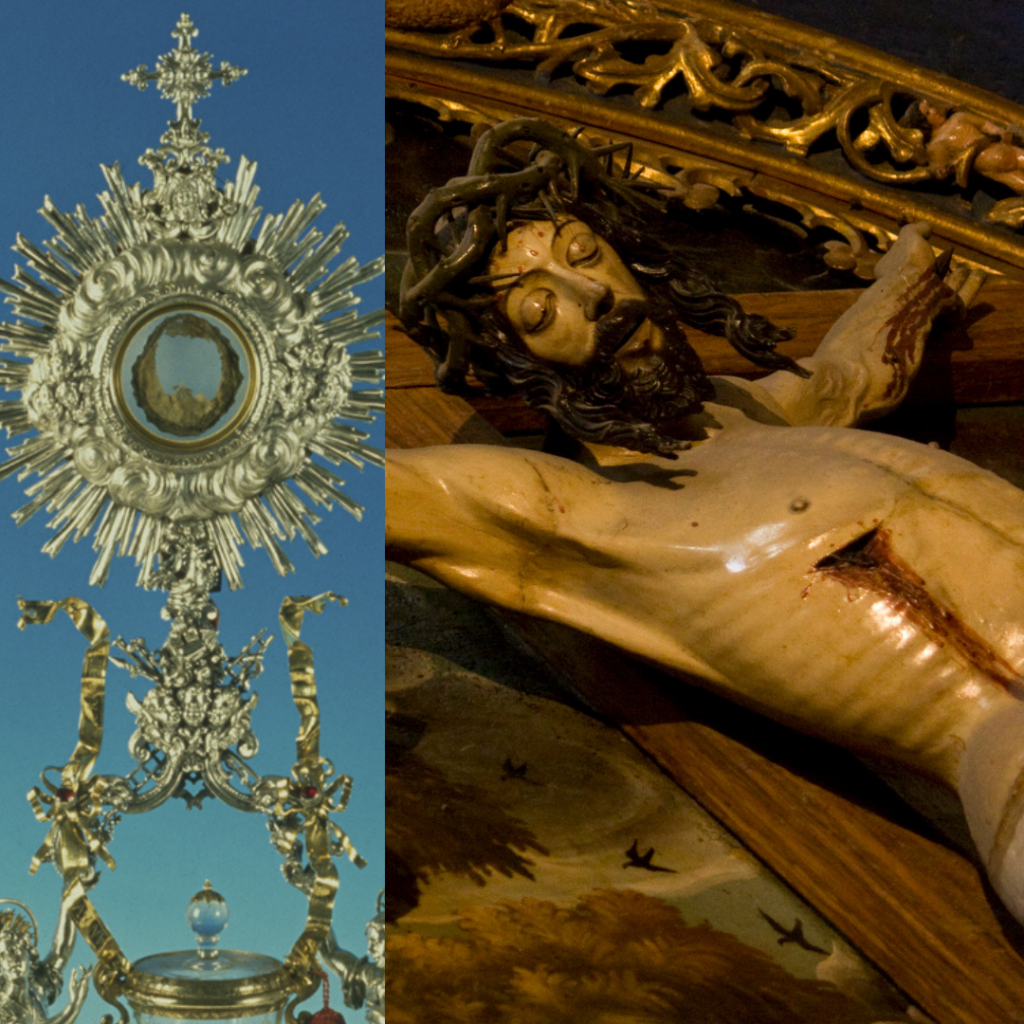Do we know Jesus’ blood type?
An amazing “coincidence” between Eucharistic miracles and relics from the life of Jesus Christ suggests that we might.
In the eighth century, a Basilian priest in Lanciano, Italy who doubted the Real Presence of Jesus in the Eucharist, was offering Mass when the Eucharist miraculously turned into natural flesh and blood.
You can still see the non-decomposing flesh and blood in the Church of San Francesco today.
In the 1970s and ’80s, some of the flesh and blood from this miracle was studied by scientists, who, among other things, found the blood was AB.
Interesting, right?
In the 13th century (500 years after the miracle of Lanciano), another priest doubting the truth of the Real Presence also experienced a Eucharistic miracle: the host started bleeding all over his corporal (a cloth used in the liturgy). You can still see the cloth on display in the Cathedral of Orvieto.
Scientific testing of this cloth in the mid-1990s showed that the blood was AB as well.
The AB blood type has also apparently been found on the Shroud of Turin. There are even reports that blood taken from weeping statues of Mary have the AB blood type.
Now, it’s possible that these miracles and relics are not authentic and the fact they have AB blood type is just a coincidence. But the odds are strongly against it– the percentage of the population with AB blood type is in the single digits.
And remember, blood types were only discovered in the early 20th century, long before most of these miracles happened and these relics surfaced – meaning that anyone trying to forge them would not have even known about blood type as something to “get right.”
This makes it much more likely that these miracles and relics, separated by centuries and long before the Scientific Revolution, are in fact authentic.
This would make Jesus’ blood type AB.




